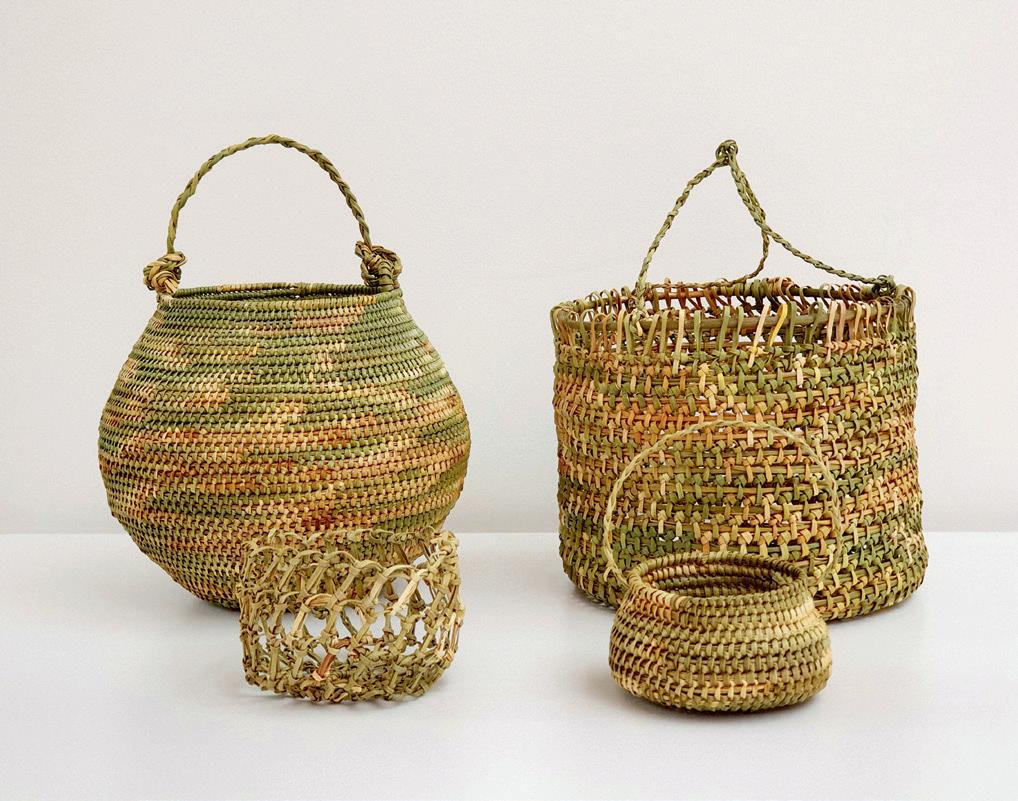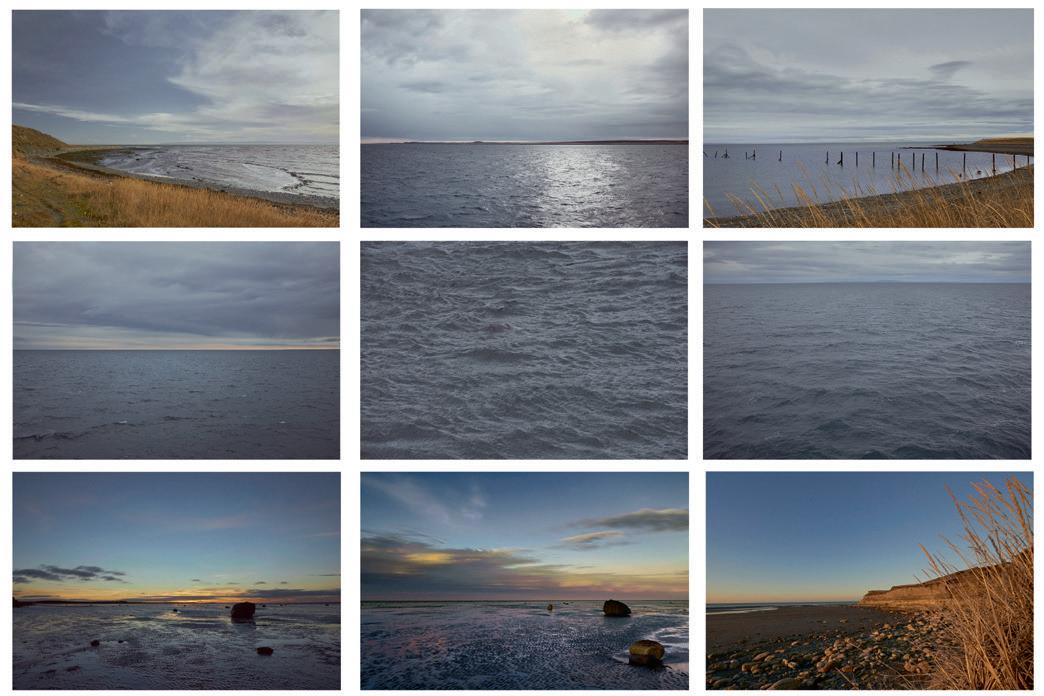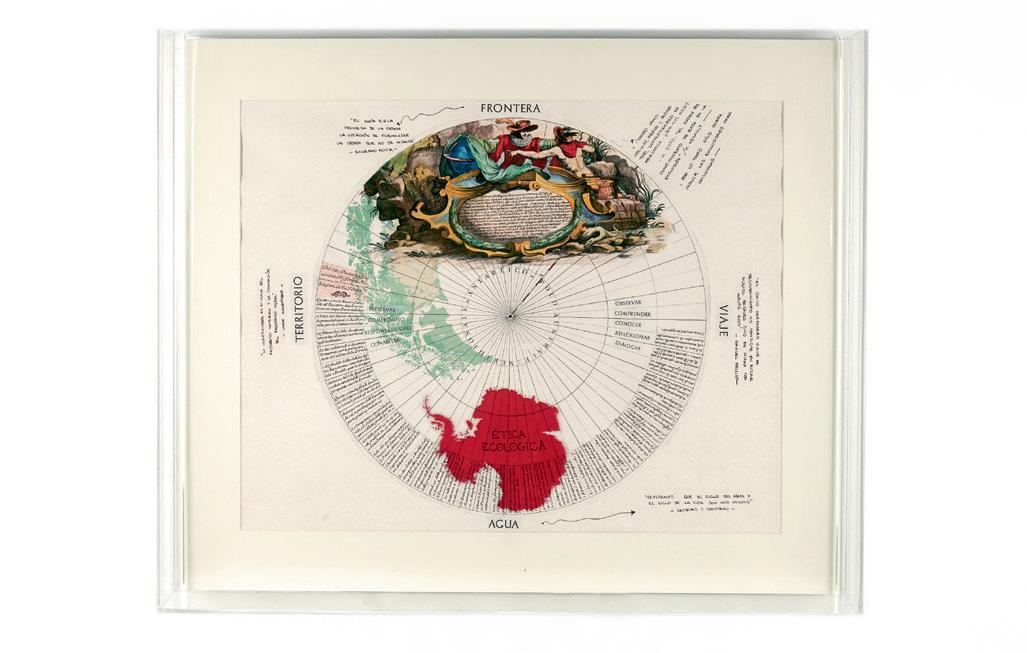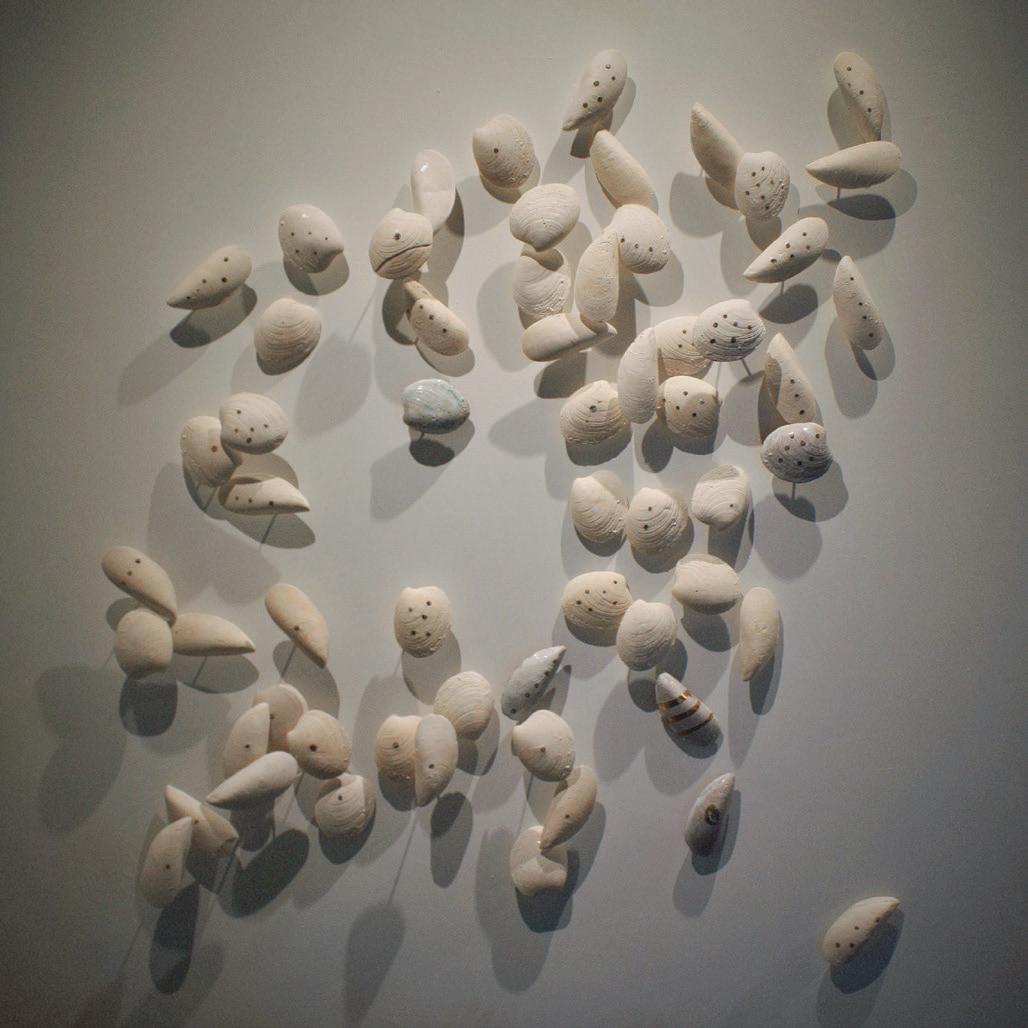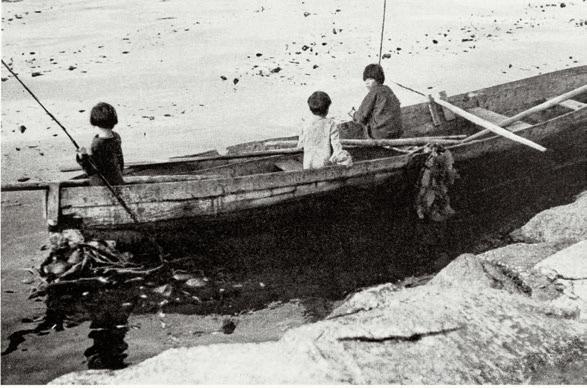
2 minute read
Kawésqar
Fotografía / Photograph Junius Bird, Puerto Río Frío, Isla Wellington, publicada en / published in 1946. Handbook of South American Indians: The Marginal Tribes, vol. 1. Reproducción de la biblioteca del / Reproduction of the library of the Museo Nacional de Antropología.
Kawésqar significa “seres humanos”: “kawes” es “piel” y “qar”, “hueso”. Los lobos marinos y los moluscos constituían la base de su alimentación, que completaban con pescado, aves, marsopas, delfines, nutrias, huemules (ciervos), coipos (roedores) y vegetales. Los hombres se encargaban de la caza, la pesca y la fabricación de armas, herramientas, embarcaciones y viviendas. Las mujeres recogían moluscos y vegetales, preparaban las pieles para la indumentaria y las cubiertas de las viviendas, hacían cestería y tenían encomendadas las tareas domésticas y el cuidado de los hijos. En la actualidad, unos 400 kawésqar residen en las localidades chilenas de Jetárkte (Puerto Edén), Puerto Natales, Punta Arenas y Puerto Williams. Se dedican a la pesca, la recolección de moluscos y la producción y venta de cestería. –Kawésqar means “human beings”: “kawes” is “skin” and “qar” is “bone”. Sea lions and mollusks formed the basis of their diet, which they completed with fish, birds, porpoises, dolphins, otters, huemules (deer), coipos (rodents) and vegetables. The men were in charge of hunting, fishing and the manufacture of weapons, tools, boats and houses. The women gathered mollusks and vegetables, prepared the skins for clothing and roofs of the houses, made baskets and were entrusted with housework and childcare. Currently, about 400 Kawésqar reside in the Chilean localities of Jetárkte (Puerto Edén), Puerto Natales, Punta Arenas and Puerto Williams. They are dedicated to fishing, the collection of mollusks and the production and sale of basketry.
Advertisement
Punta de arpón, salta. Siglo XIX. Hueso de ballena. Museo Nacional de Antropología.
Se utilizaba para cazar lobos marinos. Muchas de las armas kawésqar, como las de sus vecinos yagán, se realizaban con hueso de ballena, que conseguían de ballenas varadas. Cuando encontraban una, era motivo de celebración, avisaban a los grupos vecinos con señales de humo y solían aprovechar la gran cantidad de alimento que proporcionaba para realizar ceremonias.
Harpoon point, salta. 19th century. Whale bone. Museo Nacional de Antropología.
It was used to hunt sea lions. Many of the Kawésqar weapons, like those of their Yagán neighbors, were made with whale bone, which they obtained from beached whales. When they found a beached whale, it was cause for celebration, they warned neighboring groups with smoke signals and they used to take advantage of the large amount of food it provided to carry out ceremonies.

Punta de lanza, tant-tarrh. Siglo XIX. Hueso de ballena. Museo Nacional de Antropología.
Se empleaba para cazar marsopas, delfines y huemules, para lancear peces en aguas poco profundas y en los enfrentamientos.
Spearhead, tant-tarrh. 19th century. Whale bone. Museo Nacional de Antropología.
It was used to hunt porpoises, dolphins and huemules, to spear fish in shallow waters and in fighting.


